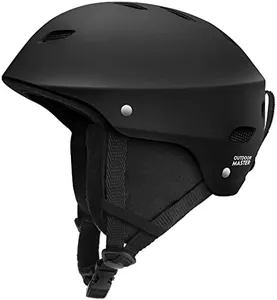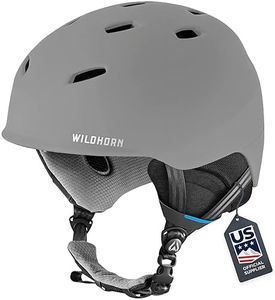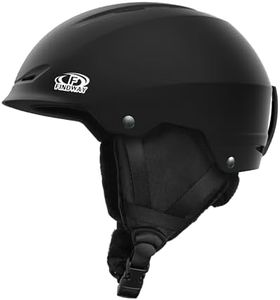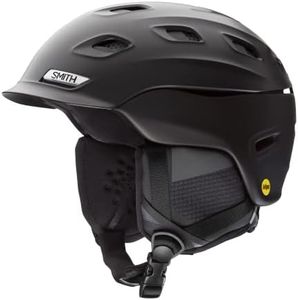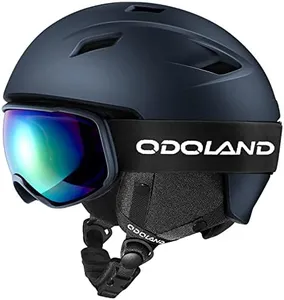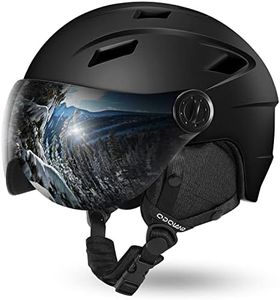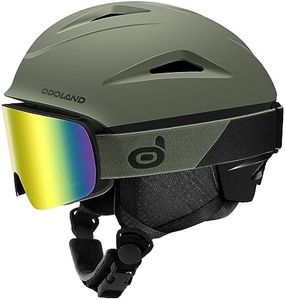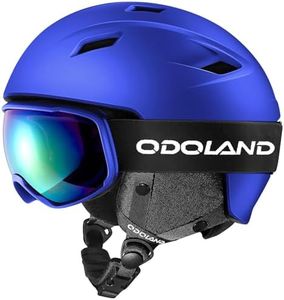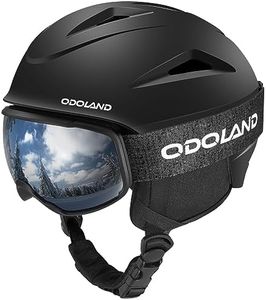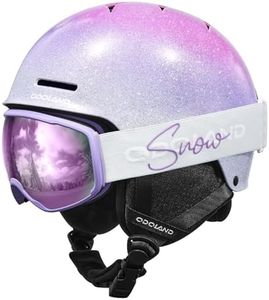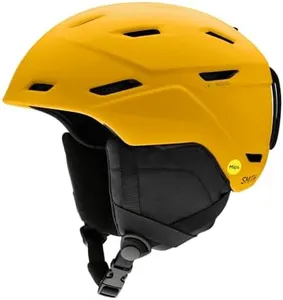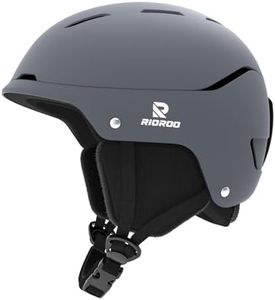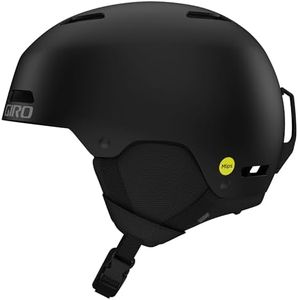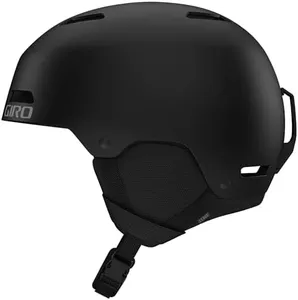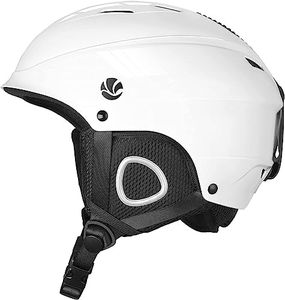We Use CookiesWe use cookies to enhance the security, performance,
functionality and for analytical and promotional activities. By continuing to browse this site you
are agreeing to our privacy policy
10 Best Snow Helmets 2025 in the United States
How do we rank products for you?
Our technology thoroughly searches through the online shopping world, reviewing hundreds of sites. We then process and analyze this information, updating in real-time to bring you the latest top-rated products. This way, you always get the best and most current options available.

Buying Guide for the Best Snow Helmets
Choosing the right snow helmet is crucial for ensuring safety and comfort while enjoying winter sports. A good snow helmet will protect your head from impacts, keep you warm, and provide a comfortable fit. When selecting a snow helmet, it's important to consider several key specifications to find the best fit for your needs. Here are the main specs to look at and how to navigate them.Fit and SizeThe fit and size of a snow helmet are critical for both safety and comfort. A helmet that is too loose or too tight can be uncomfortable and may not provide adequate protection. Helmets typically come in various sizes, and many have adjustable systems to fine-tune the fit. To find the right size, measure the circumference of your head just above your eyebrows and compare it to the helmet's sizing chart. A properly fitting helmet should feel snug but not overly tight, and it should sit level on your head without tilting forward or backward.
Safety CertificationsSafety certifications indicate that a helmet has been tested and meets specific safety standards. Common certifications for snow helmets include ASTM F2040, CE EN1077, and Snell RS-98. These certifications ensure that the helmet can withstand impacts and provide adequate protection. When choosing a helmet, look for one that has at least one of these certifications to ensure it meets safety standards. Your need for safety should guide you to prioritize helmets with recognized certifications.
VentilationVentilation in a snow helmet helps regulate temperature and prevent overheating. Helmets can have fixed or adjustable vents. Fixed vents provide constant airflow, while adjustable vents allow you to control the amount of airflow based on the weather conditions. If you tend to get hot easily or plan to use the helmet in varying temperatures, look for a helmet with adjustable vents. For those who prefer simplicity and don't mind a consistent airflow, fixed vents may be sufficient.
Liner and PaddingThe liner and padding inside a snow helmet contribute to comfort and warmth. Liners can be made from various materials, including fleece and moisture-wicking fabrics. Some helmets have removable and washable liners, which can be convenient for maintaining hygiene. When choosing a helmet, consider the type of liner that will be most comfortable for you and whether you prefer the option to remove and wash it. If you often ski or snowboard in cold conditions, a helmet with a warm, insulated liner may be ideal.
WeightThe weight of a snow helmet can affect comfort, especially during long periods of use. Lighter helmets are generally more comfortable to wear for extended periods, but they should still provide adequate protection. When comparing helmet weights, consider how long you typically wear your helmet and whether a lighter option would enhance your comfort. If you prioritize comfort and plan to wear the helmet for long sessions, a lighter helmet may be the best choice.
Goggle CompatibilityGoggle compatibility ensures that your helmet and goggles fit together seamlessly, providing a comfortable and secure fit. Some helmets are designed to work with specific goggle brands or models, while others have universal compatibility. When choosing a helmet, consider the goggles you already own or plan to buy and ensure they will fit well with the helmet. A good fit between helmet and goggles can prevent gaps that let in cold air and improve overall comfort.
Additional FeaturesAdditional features such as audio compatibility, camera mounts, and adjustable ear pads can enhance your experience. Audio-compatible helmets allow you to listen to music or take calls while on the slopes. Camera mounts are useful for those who like to record their adventures. Adjustable ear pads can provide extra warmth and comfort. Consider which additional features are important to you based on your preferences and how you plan to use the helmet. These features can add convenience and enjoyment to your snow sports activities.
Most Popular Categories Right Now


